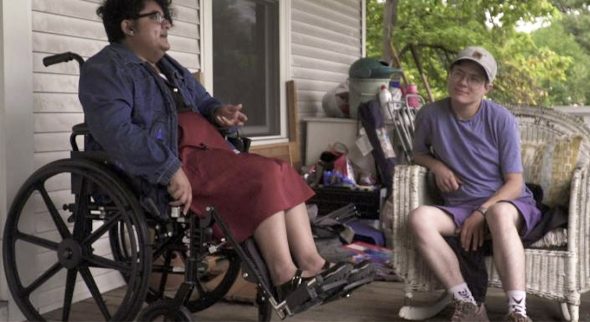Using new media literacy in the fight against ableism

By Andrew Gregory Krzak
Imagine a home decorator stands before you, asks what color you want your room to be, holds up a card with the primary colors printed on it — but you want green. Now imagine that you lack the ability to speak, and there is nothing green near you to point to so you can show your preference. The decorator picks red for your room.
This situation is an oversimplification of the types of challenges faced by —perhaps endured by — people without the ability to speak. Because of the communication gap — tools typically are designed to meet speaking people’s needs and not those who genuinely need them — in this case, non-speaking people become “othered.” Many assume members of this community lack the intelligence to understand speech or comprehend it. That’s patronizing at best, advocates say.
The onus, then, is on those with the disability to create the communications tools they need themselves. And that’s just what Learning Sciences student Marrok Sedgwick — himself a nonspeaking multiply disabled individual — is doing via his work with new media literacy.
New media refers to any contemporary digital media form, such as a blog, an app, or a video game. New media literacy is the understanding of the use and creation of those tools.
Sedgwick, who has a background in film and digital media, as well as theatre, is in his second year of the Ph.D. program at the Learning Sciences Research Institute (LSRI) within the University of Illinois Chicago (UIC), With his research, Sedgwick is trying to discover new ways that nonspeaking youth with intellectual and/or developmental disabilities can use new media literacy to participate more fully in academic work.
“For nonspeaking disabled kids, new media is part and parcel of life, especially with digital augmentative and alternative communication tools, such as an app for a tablet that a person can type into and then it speaks for them,” Sedgwick said. “But a lot of apps rely on a series of menus chosen by a teacher, parent or speech therapist because many nonspeaking people don’t have the motor skills to type. This means that they are limited to communicating with icons in menus that someone else has guessed might feature things they want to say.”
For example, he asked: What happens when icons someone else developed don’t match what the user thinks? New media literacy, Sedgwick believes, has the potential to push nonspeaking youths’ communication beyond what other people have guessed might be of use or interest. And he thinks educators should have tools to support nonspeaking students’ use of new media, as well as ways to assess academic work that is not tied to the spoken or signed language(s) used in classrooms.
Sedgwick started thinking about this work while he was an undergraduate and became active in the neurodiversity rights movement, a political movement that asserts there are all kinds of different brains and none of them are inherently bad. He became aware of the criticisms about special education and especially applied behavior analysis, the “gold standard” for segregated classrooms for students with significant support needs.
Sedgwick then earned an MFA in Social Documentation from the University of California Santa Cruz, where his thesis was an ethnographic film about autistic culture’s perspective on applied behavior analysis. That film, People Like Me, won the David L. Wolper Student Documentary Award from the 2020 International Documentary Association Awards.
The application of his art to the field of new media fuels Sedgwick’s desire to demand that society responds better to the needs of disabled kids. Youth with intellectual and/or developmental disabilities, he said, can leverage new media literacy skills to engage with academic content and the world around them.
Sedgwick is translating this work through the learning sciences, which, he said, welcomes discussions of equity and power within learning environments. Outside of UIC, Sedgwick noted, there are very few universities in the country that have Ph.D.-level coursework in disability studies. LSRI attracted him with its disciplinary specialization and the availability of Ph.D.-level disability studies coursework through UIC’s Disability and Human Development department.
Sedgwick applied for and received a 2021 Microsoft Research Ada Lovelace Fellowship, which promotes the value of diversity in computing by providing funding for doctoral students who are underrepresented in the field of computing. With his fellowship and his Ph.D. studies, Sedgwick said he thinks he’s in an optimal position to contribute to the field about greater representation for disabled people in civic life.
“If my research can contribute to more young voices being heard by teachers and schools, then those youth will have access to more and better academic opportunities,” he said. “Then they will be better positioned to demand their rights be respected in areas where they’ve been summarily omitted.”
